Gilgeori Toast: Korean Street Eats
I was describing this website to a coworker the other day and I kind of spontaneously said that what I’m doing is traveling the world in my own kitchen. Not only is that a great new tag line for the site (which I have already added to the randomized header images), but it’s kind of an accurate description of what we’re doing here, as I see it. I use this sandwich research to learn about other cultures and to explore them (as much as is possible) through recreating their food. In a way, I try to know as much as I can about the culture that produced each sandwich I write about, and to understand it and appreciate it from as close to a local perspective as I can approximate.
It’s a pretty thin approximation, though. Hard as I try, my kitchen is no Magic School Bus. Banging out Rou Jia Mo for my family and friends can’t replace buying one from a vendor at a night market in Xi’an. As good as my Trancapecho was, it can’t possibly match the experience of eating one on the high Andean plateau. Nothing can compare to the actual experience of immersing oneself in another culture. As the world opens back up I certainly hope to be able to do more actual traveling. But I feel like I have been able to glean some insights simply by preparing these many sandwiches I’ve written about.
I don’t know what insights into Korean street food culture I will find in the Korean toasted street sandwiches that are called “Gilgeori toast” or “Grandma toast” or just simply “toast.” Amid the fishcakes and the ricecakes, the pancakes and the steamed buns, the red bean pastries inexplicably shaped like carp and the ever-present skewers of various meats, there is this grab-and-go breakfast sandwich sticking out seemingly incongruously, something that on the surface appears more familiar to these Western eyes.
Of course there’s a twist or two, some deviations from what would typically go into an American-style breakfast sandwich, things that make this toast uniquely Korean. But even these ingredients are approachable, things that most likely are within arm’s reach in many American kitchens. Did the same pervasive postwar American presence that led to the creation of the glorious mess that is Korean army stew also influence the development of this street treat?
I don’t know, and I’m not sure how to answer that from way over here in suburban Illinois. If a deep dive into the oral history of the Gilgeori toast sandwich has ever been produced, I’m not aware of it. All I know is that a couple years ago it seemed like every other “suggested” video I’d scroll past on Facebook was somebody putting together a crazy-looking egg sandwich with griddle-toasted bread, shredded cabbage and other vegetables, sometimes ham and/or cheese, ketchup and/or mayonnaise and/or some other unidentifiable sauces, and more often than not, plain white sugar. Videos a little like the one I’ve embedded below, but slicker, more commercially produced. You most likely know the kind of videos I mean, if you have ever mentioned liking food on Facebook and tripped the same algorithms I did.
There are dozens of these videos on Facebook and hundreds more on Youtube, and for the most part, they follow the same pattern. The basic formula starts with thinly sliced cabbage, julienned carrots, sliced scallions, perhaps some thin-sliced or grated onion. The chef will then crack an egg or two right into the bowl of vegetables and mix up a vegetable-heavy omelet batter.

Working on a flattop griddle (or stovetop/frying pan) slathered with butter (or more authentically, margarine) the Youtube chef–I am tempted to call them the “yt chef” but that is only sometimes the case–will attempt to form this mound of eggy vegetable matter into something resembling a bread-proportioned rectangle.
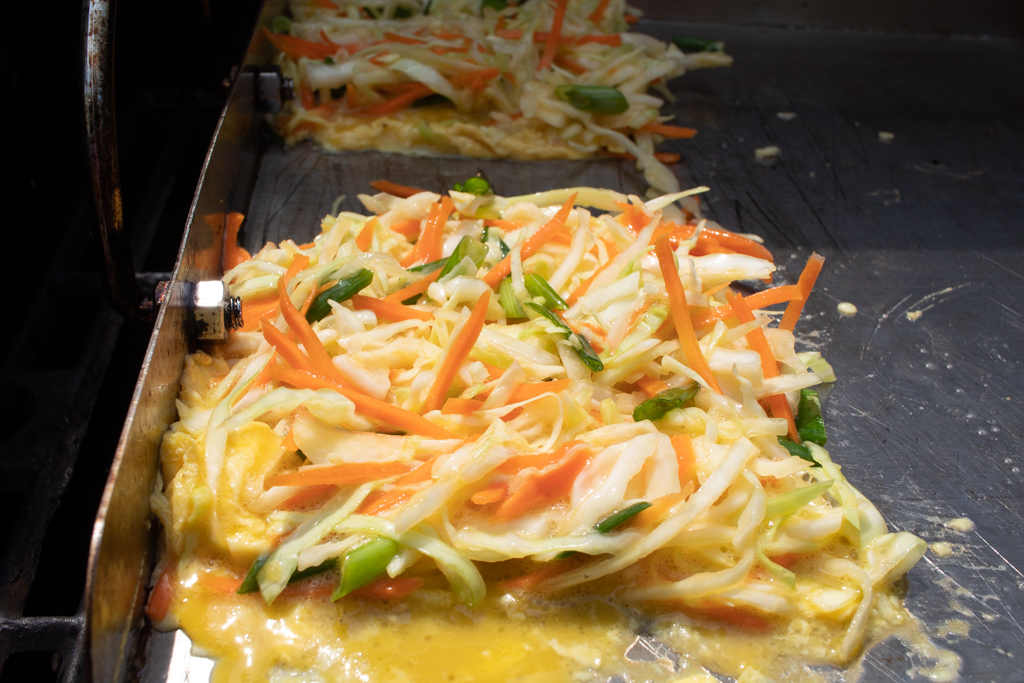
While the eggs are cooking, the chef will also be toasting the bread. This bread may be plain old squishy white bread, or it may be thicker slices of Shokupan, Japanese milk bread.

The bread is placed on the griddle and flipped so that both sides absorb some of the melted margarine and are toasted while the eggs cook.



Some chefs may add sliced ham and/or American cheese.
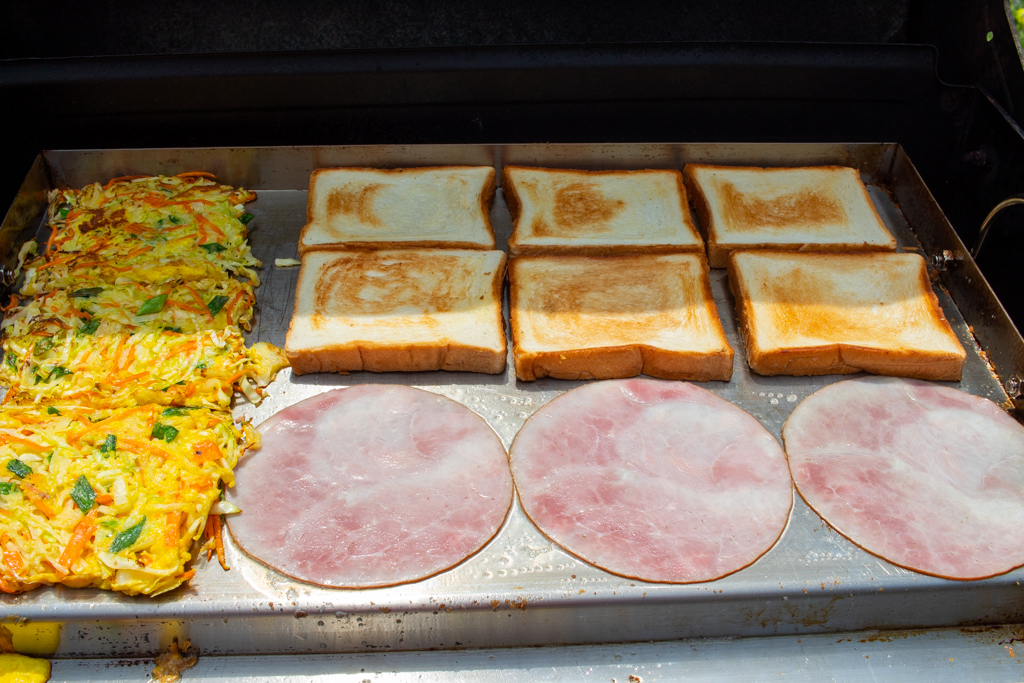
To assemble, the chef will start with a slice of toasted bread.

To this, the chef will add the egg and vegetable patty.
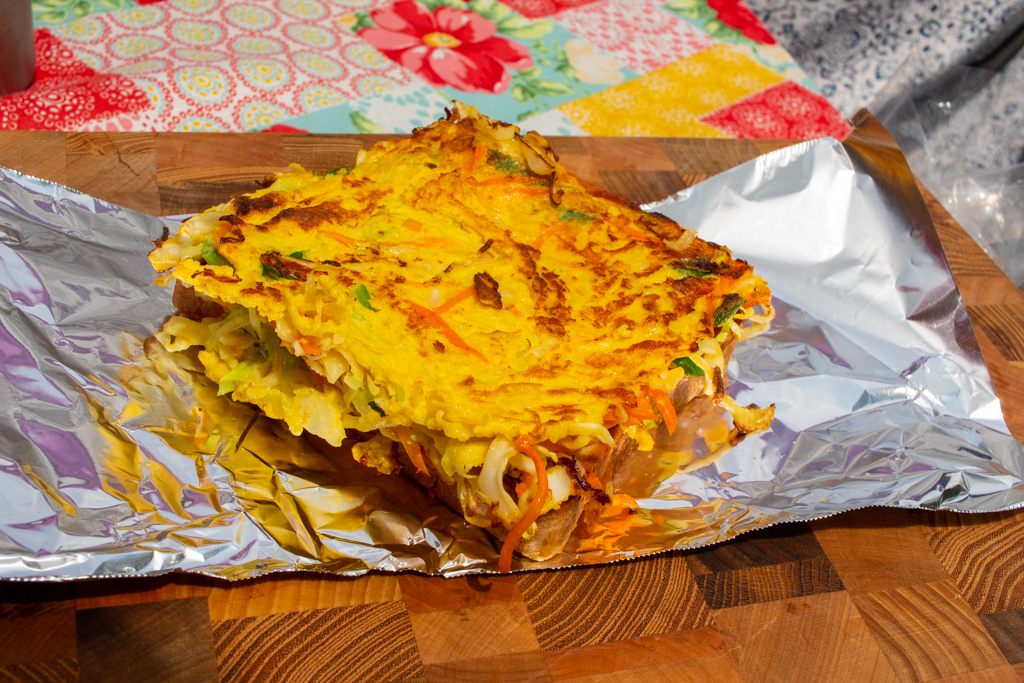
Then, bizarrely, the chef will add a heaping spoonful or two of processed white sugar. Sometimes they’ll add the sugar to the bread instead of the eggs. But sweet is definitely an expected component of this sandwich.


Then ketchup, or ketchup and mayonnaise, or ketchup, mayonnaise, and other sauces up to and including yellow mustard. But always, always ketchup.


Optionally, we’ll see an addition of ham and cheese.
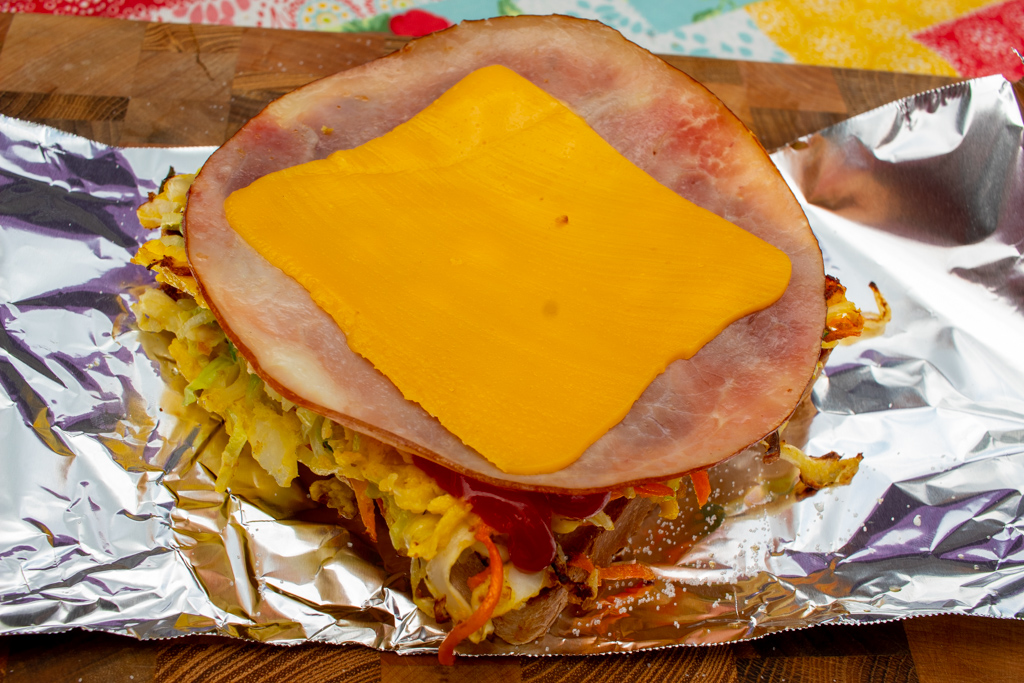
Finally, the chef finishes the sandwich with the top slice of toasted bread.



The videos take a few different paths from there. Sometimes the sandwich will be sliced and eaten. Sometimes it will be wrapped in foil, or slipped into a paper sleeve. Sometimes the sandwich will be folded in half rectangularly over the back edge of the knife and wrapped tightly in foil. Sometimes the video maker will demonstrate to us one common method of serving these sandwiches for eating on-the-go–they are wrapped up diagonally in a thinner strip of foil, then the skinny end is stuffed into a small paper cup.


I’m not completely enamored of the cup serving style, to be honest. I can see how it might be helpful to have something protecting your hands while you walk around eating this sandwich–it is at least as sloppy as it looks, with all that ketchup oozing out the top and bottom and sides with every bite. But I also feel like the cup is more of a security blanket than actual security–the sandwich does not fit very snugly into it at all, and it wouldn’t take much to send it spilling onto the ground.
The sandwich itself, though–wow! The number one thing I noticed was the crunch of the cabbage. That alone would wake someone up to the fact that this was not a typical American-style breakfast sandwich. Our sandwiches trade in textures that are soft and chewy and greasy, the cooked egg, the oozing melted cheese, the sausage or bacon or ham. Occasionally there will be a crisp bit of bread but even the breads tend toward the soft, chewy, or greasy in ways both bad and good–limp white bread half-heartedly heated in a toaster or a hot salty flaky biscuit, a croissant with the life steamed out of it by a stint in some wax paper, an English muffin with butter dripping from every jagged cranny, a densely toothsome bagel.
Cabbage in a breakfast sandwich is brilliant. It introduces an element of textural variance that is both surprising and needed. One might also claim that it introduces a more healthful element to the breakfast sandwich. That is, until we grapple with the elephant in the room–all that sugar. I probably did not use as much as the typical Korean street vendor would add, and while it was certainly present in the final product I did not consider what I was eating to be particularly sweet, even with the American-style ketchup added in. It seemed to act more like salt would in some ways, by brightening the flavors of the elements it interacted with, the egg, the cabbage, the ham, even the ketchup.
Ah, yes, the ketchup. I am, vocally, not a fan of ketchup, except in certain situations where I feel like it adds something. It does here. Ketchup is a quick and easy way to add salt, sweet, and umami flavors to a dish, and it is what is needed in this sandwich. The sandwich would still be good without it. But I wouldn’t still be making more of them and seeking them out a week later without it.
This was a great sandwich. The problem, though, with the prevalence of this version of the sandwich, even with its minor variations as discussed above–there is apparently way more to street toast than this.
The above video is 52 minutes long, which is not only a big time commitment but is almost certain to have you drooling and ready to run for the nearest egg sandwich by the end of it. It shows 12 different vendors, ranging from the little grandma-style street stand to the giant multinational corporate chain entity, making their versions of Gilgeori toast.
Not one of them is the same. The closest to what I’ve discussed so far is “Granny Toast,” starting at about 10:06. With the rest, anything goes! More often than not the cabbage is added in a handful on top of the egg after it’s already been cooked. There might be ham, yes, or the meat option might be bacon, or a sausage patty, or sliced hot dogs, or a hash brown patty, or some combination of the above, or even another fried egg on top of the folded egg that forms the base of the sandwich. The sweet element may be sugar, or it may be sweet chili sauce, or it may be a sweet fruit sauce like the kiwi mayonnaise used by Isaac Toast, the biggest chain of toast spots in Korea. (I found a recipe for the kiwi sauce here and made it. It’s stunningly good but I don’t know what else I’ll use it for.)
Speaking of sauce, they may use ketchup and/or mayonnaise as previously noted, or a proprietary sauce like Isaac’s kiwi sauce, or something thicker and darker red than ketchup that may be gochujang, or any number of unidentified sauces that may or may not include the Korean “hot chicken mayonnaise” I recently discovered and decided to include.



The egg may or may not include shredded cabbage, as noted. The shredded cabbage may or may not include other vegetables. The egg mixture may include sweet corn. Some places use molds to shape their eggs into the squarish bread-sized shapes required for these sandwiches. Other places cover the entire griddle surface with egg and cut the resulting megaomelet down into squares. The sandwich may include pickles. The sheer variability of this sandwich is a little overwhelming. But I did want to try a few variants.





The Isaac Toast version uses an egg omelet that includes sweet corn, shredded cabbage, a sweet kiwi mayonnaise sauce, sliced pickles, and, at least in my version, ham and cheese. The sweet sauce, consisting of kiwi and pineapple and onion blended into mayonnaise and sweetened with honey, is a fantastic dressing for the plain shredded cabbage that is barely heated through by its time on the griddle, but the effect was somewhat overwhelmed by the cheap, loud hamburger pickles I used. A thinner-sliced pickle, or one with a less aggressive flavor would work better I think. I’d be interested to see what Isaac’s pickles taste like.




This version was very much like the first one I made, but for the addition of the Hot Chicken Mayonnaise. Listen, let me tell you about this Hot Chicken Mayonnaise. I don’t know what the hell they mean by Hot Chicken flavor, but when they say Hot they are not kidding around. For a condiment as aggressively white as mayonnaise, this is packing serious capsaicin. Just look at that nuclear-ass orange gunk up there.


Both of these sandwiches should come with warning labels, one for the pickles and the other for the hot chicken mayonnaise. Not surprisingly, I’m already running out of that little bottle of hot chicken mayo. I had to use it again this morning after reading that some places offer the option to serve your Gilgeori toast sandwiches on alternate bread products. Like bagels.



And that’s it for Korean Gilgeori toast because there aren’t any places locally that sell it. The End.
Epilogue: I Find A Local Place Selling Korean Toast
So today is Mindy’s birthday, and I’m here in my office writing instead of eating cake with her because I am a terrible husband. It was an interesting day though. Mindy picked a restaurant in the Old Town neighborhood of Chicago called Forastero for her birthday lunch.

Forastero does Mexican/Korean fusion food, a combination that has been around in the US for decades, but has really seemed to pick up, at least in the Chicago area, over the past 10 or 12 years. And while fusion is a dirty word for some foodies, I tend to really like these places. Korean flavors generally feel right at home in tacos and burritos, and most of the people doing this cuisine seem to have a pretty solid handle on what works and what doesn’t. Besides, if you put kimchi in something, I will eat it. Period. Mindy chose this restaurant because we are huge fans of jamaica, the sweet and tart hibiscus tea served in many Mexican restaurants, and Forastero offers a boozy cocktail version of it with mezcal. I will always DD for this birthday girl.
Forastero’s offerings ranged from the good to the remarkable. As I said, put kimchi on anything and I’ll eat it, and Forastero’s menu includes a shareable-sized order of kim chi fries, a fairly standard appetizer for a Mexican/Korean fusion restaurant but in this case a very well-made one.
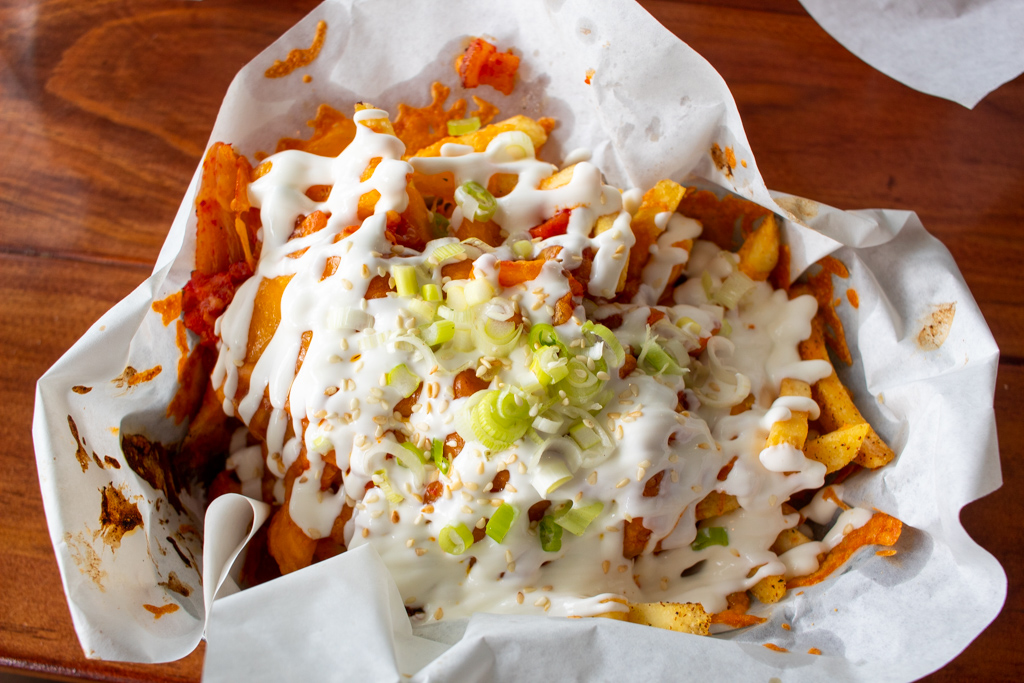
The absolute best thing we ate there though were the “Dak wings,” an order of thick, meaty wings fried crisp and glazed in a sauce of pomegranate molasses with guajillo and gochugaru chilies. The pomegranate sauce was sweet with the slight tartness one expects from pomegranate, but the smoky, roasty flavor of the rehydrated dried peppers kept the wings from being too candy-like. Still, they were addictive, and only our promise to bring some home for our son kept us from dispatching the order with haste.
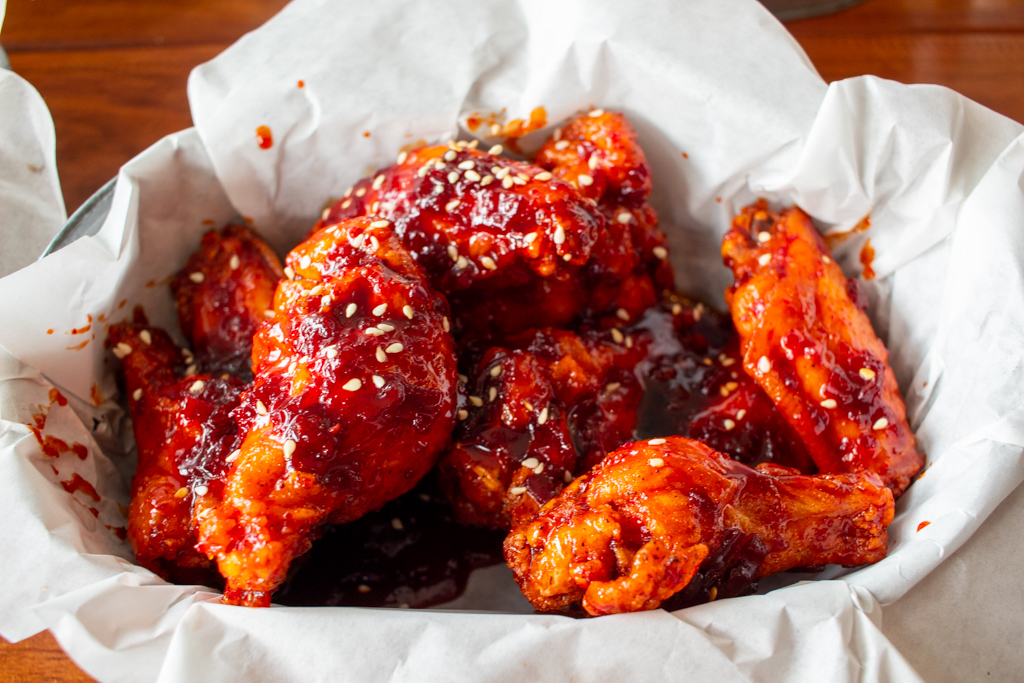
While perusing the menu though, I noticed something down in the Kids Menu called “Grilled Toast.” I asked and, sure enough, this was their take on Gilgeori toast.
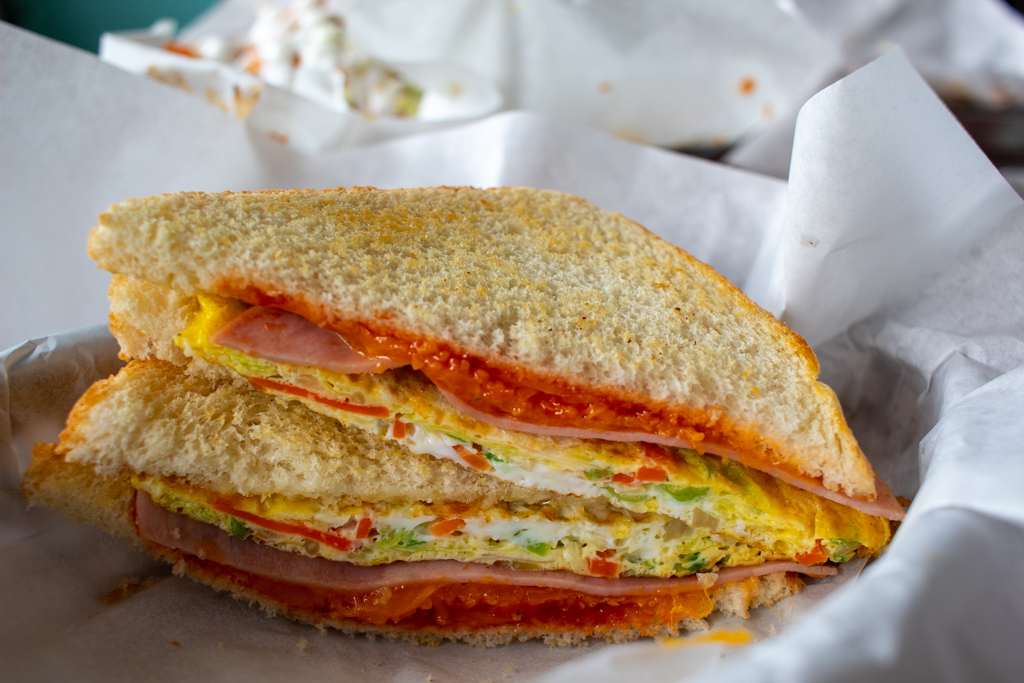
Forastero’s version is a non-overstuffed take, a kid-proportioned sandwich fit for a kids menu. There is plenty of vegetable flavor in the egg omelet but not as much of the crunch as I had enjoyed in my own versions–again, this was intended as a child’s sandwich and that seems appropriate. It also seemed to lack the direct addition of white sugar, which I’m sure the parents eating at Forastero appreciate. Still, it’s a good sandwich and kid-friendly and it gives me hope that there are other versions out there that I just haven’t been able to find. ‘Cause I’d like to eat more of these, but especially if I can get someone else to make them. If anybody knows where to find them in the area (Titus maybe?) please let us know!

I like sandwiches.
I like a lot of other things too but sandwiches are pretty great


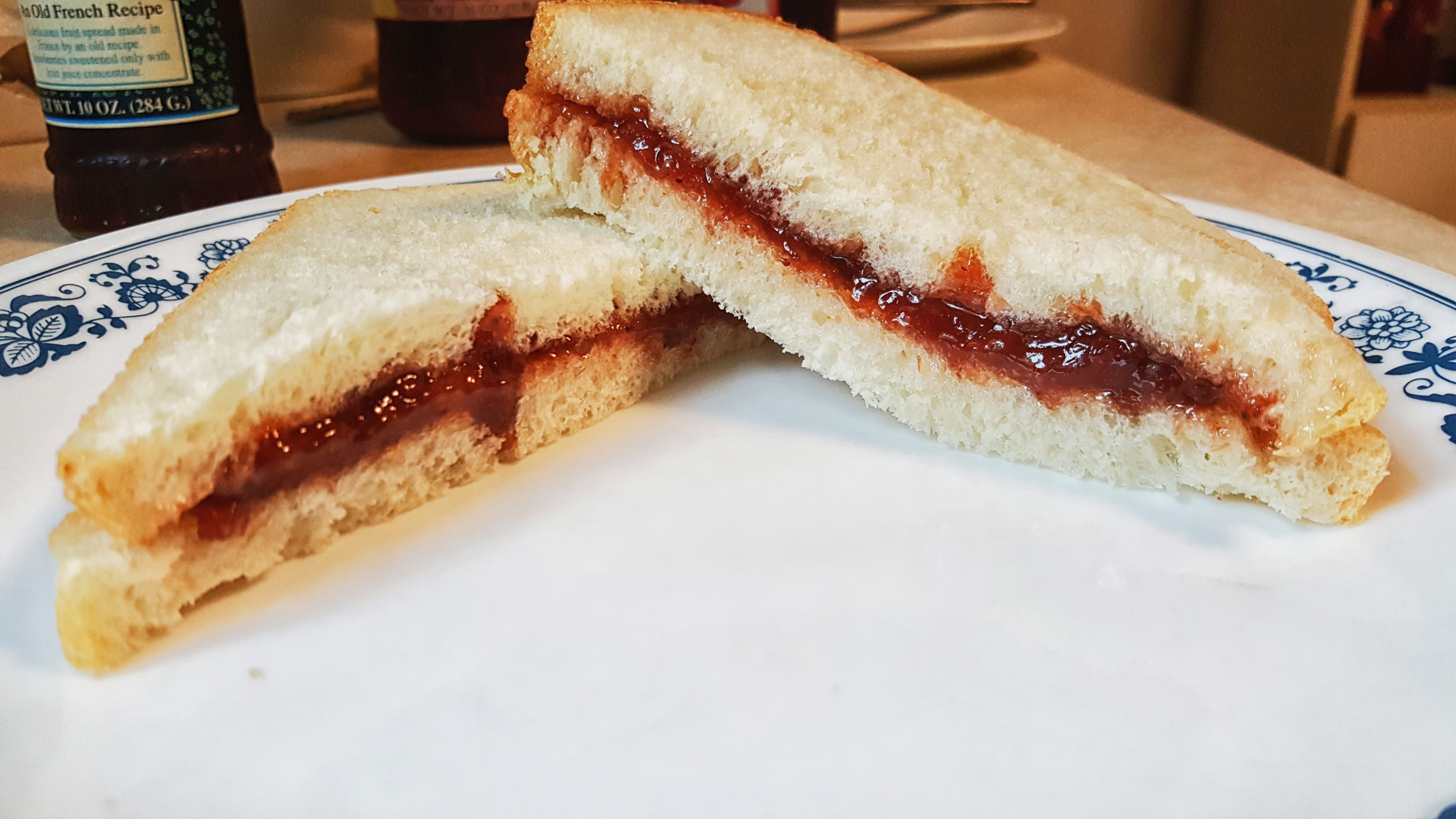








Recent Comments